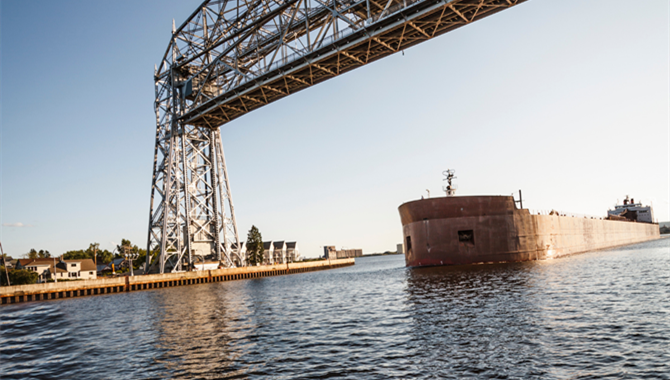In December 2021, the University of Wisconsin-Superior's Lake Superior Research Institute awarded Bawat a $600,000 USD grant to set up a land-based ballast water reception and treatment facility in partnership with the Duluth Seaway Port Authority and AMI Engineering for a test period of one year in the Great Lakes region.
CEO Marcus Hummer said: “That we were able to win this grant ahead of some of our largest competitors is a stamp of approval from the U.S. authorities who are looking for functional Type Approved technologies to protect the largest fresh-water system in the world. This is all the more encouraging because the idea of treating ballast water onshore is a cornerstone in our growth strategy. It is a market where we are uniquely positioned because of our technology, and one where we can offer ballast-water-as-a-service to the benefit of vessel operators and not least the maritime environment”.
Director Of Government and Environmental Affairs at Duluth Seaway Port Authority Jeff Stollenwerk said: “While water transportation is the most environmentally friendly mode of freight movement, there is always room for improvement. The Duluth Seaway Port Authority is proud to partner with Bawat and AMI Engineering in our work to reduce the environmental footprint of maritime commerce”.
How Bawat's Mobile BWMS Works
The Bawat Mobile ballast water treatment solution is a compact system that is placed in a container and can easily be moved or sited in a harbour area or placed on another vessel. Bawat's Mobile BWMS allows ballast water treatment on land or barge in ports, terminals and shipyards, if an on-board system is not installed or malfunctions. By establishing and operating mobile treatment units, a large number of vessels can be serviced per unit and avoid disposal of untreated water in seas and harbors.
Bawat's Mobile system is a single-pass system, that either delivers treated D2-compliant ballast water to the vessels before departure or receives and treat ballast water during de-ballasting operation. With a single pass, holding time is eliminated and as the Bawat technology operates without a filter, one of the largest operational obstacles in traditional BWMS is completely avoided. So, when the ballast water has passed the Bawat system, either in ballasting mode or de-ballasting mode the ballast water is in full compliance with the IMO or USCG discharge criteria for ballast water.
The opinions expressed herein are the author's and not necessarily those of The Xinde Marine News.
Please Contact Us at:
media@xindemarine.com


 Ningbo Containerized Freight Index Weekly Commentar
Ningbo Containerized Freight Index Weekly Commentar  Ningbo Containerized Freight Index Weekly Commentar
Ningbo Containerized Freight Index Weekly Commentar  Ningbo Containerized Freight Index Weekly Commentar
Ningbo Containerized Freight Index Weekly Commentar  BIMCO Shipping Number of the Week: Bulker newbuildi
BIMCO Shipping Number of the Week: Bulker newbuildi  Ningbo Containerized Freight Index Weekly Commentar
Ningbo Containerized Freight Index Weekly Commentar  Ningbo Containerized Freight Index Weekly Commentar
Ningbo Containerized Freight Index Weekly Commentar